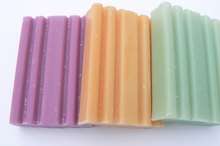Signs & Symptoms of a Petroleum Allergy
Ancient societies in Egypt and China burned petroleum to produce light. Now, petroleum is used in many aspects of daily life. According to the Ecology Center, even food can contain petrochemicals. This is mainly due to pesticide exposure. Additional exposure to petroleum can come from body care products like toothpaste, hair styling products, mineral oil and cleansers, as well as items including clothing, tampons and sanitary pads. Due to its ubiquitous presence, people can develop allergies and sensitivities to petroleum.
Respiratory Reactions
The respiratory system often exhibits the first signs and symptoms of a petroleum allergy or sensitivity. According to the University of Pennsylvania, the mucous membranes of the mouth and nose may itch causing sneezing, runny nose and watery eyes. Irritation to the mucous membranes may also cause inflammation and discomfort to the sinuses and can lead to headache, congestion and feelings of pressure in the nose and across the forehead. More extreme allergic reactions can include wheezing and shortness of breath. Respiratory reactions from petroleum are often due to petroleum vapors but can occur with contact exposure as well.
- The respiratory system often exhibits the first signs and symptoms of a petroleum allergy or sensitivity.
- Irritation to the mucous membranes may also cause inflammation and discomfort to the sinuses and can lead to headache, congestion and feelings of pressure in the nose and across the forehead.
Eyes and Ears
Signs You're Allergic to Petroleum
Learn More
Red, itchy and glassy eyes are common signs and symptoms of allergies, including those to petroleum. The tissue around the eyes may also become swollen and puffy in appearance. Pressure may be felt in the ears and can create a popping sensation.
Skin Reactions
Hives are the most common skin allergy symptom. However, according to Phyllis Balch in her book "Prescription for Nutritional Healing," other symptoms such as skin rash can occur 1. Both hives and rashes can cause red, inflamed skin and may itch and become painful. Blistering can also be a sign of petroleum allergies and sensitivities. Skin allergies to petroleum can come from lotions, petroleum jelly, sunblock, hair spray, perfume or aftershave and even nail polish. If you suspect you have a skin allergy to petroleum, check your body care product ingredients to see if you are exposing your skin to an allergen. Keep in mind that petroleum is used to produce the artificial colors found in some products.
- Hives are the most common skin allergy symptom.
- Blistering can also be a sign of petroleum allergies and sensitivities.
Additional Signs and Symptoms
Signs and Symptoms of a Tarragon Allergy
Learn More
In addition to common allergic reactions, petroleum can cause other health problems. According to North Dakota State University, petroleum vapors have caused symptoms of nausea and lightheadedness. Petroleum exposure can also lead to decreased coordination and elevated blood pressure. People who react to petroleum and are continuously exposed to it may have greater susceptibility to developing long-term problems affecting the blood, kidneys or liver.
- In addition to common allergic reactions, petroleum can cause other health problems.
Related Articles
References
- "Prescription for Nutritional Healing"; Phyllis Balch; 2000
- North Dakota State University: Cleanup of Residential Oil Spills Associated with Flooding
Writer Bio
Based in Colorado, Jacqueline Lerche has been writing alternative health, natural science and environment-related articles since 2009. Lerche holds a Bachelor of Science in biology and an Environmental Affairs Certification from Colorado State University.








